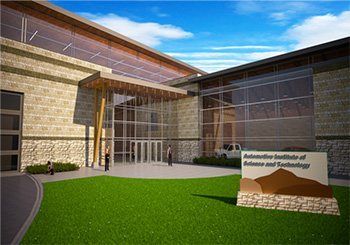03/14/2019
NEW COLORADO CHARTER SCHOOL AIMS TO STEER NINTH, TENTH GRADERS INTO AUTOMOTIVE CAREERS
Source: Aftermarket Business World
An aftermarket-oriented high school is breaking new ground by reaching out to tomorrow’s technicians when they are quite young – ninth graders. At the Automotive Institute of Science and Technology, known as AIST, students can enroll in a 4- or 6-year program, starting their freshman year of high school and continuing through their second year of college.
Chris Chesney, senior director of training at the Carquest Technical Institute (CTI) who also serves as AIST’s president, contends that two years of training in a typical vocational school is not enough.
“They are immersed in our industry for six years,” says Chesney, who views AIST’s program as far more comprehensive. “We’re moving to a competency-based model. It’s a mastery of skill. They’re not going to show up at a shop after graduation and say, ‘This is not what I expected.’”
Because the recruitment process begins in the ninth or tenth grade, “We gauge the interest first,” he points out. “It’s flipping the model upside down.”
Primarily funded through the D-49 Falcon School District in Colorado Springs, Colo., the charter school is governed by an independent board of directors.
“We’re producing a technician who is ready to go to work, and they’ll graduate with no debt because it’s a public school,” says Chesney.

Scheduled to begin classes in 2020, AIST will be using the P-TECH model (Pathways in Technology Early College High School). These three pathways – Automotive Technology, Business, or Engineering (mechanical and electrical) – are designed to provide students with the foundation they need to be successful in the aftermarket.
Six-year graduates will receive an associate’s degree in their relevant field, ASE certifications with work experience, a mastery of skills prescribed by the industry and employment opportunities at shops or parts stores. The curriculum is STEM-based, referring to Science, Technology, Engineering and Math. History and English are additionally included in the core subjects augmenting a lineup of team- and project-based classes that are relevant to the aftermarket.
“There’s no traditional classrooms in the building. It’s all project-based,” says Chesney. “Our goal is to prove the education model, scale it and build other schools like it in the country.”
An Industry Interest Assessment is currently being conducted by a third-party firm that specializes in capital campaigns to help understand the industry’s desire to “Be Part of the Change” and build a foundation for fundraising. A consortium is being established to further develop an industry-based curriculum, continue industry-wide fundraising efforts, secure the land for the campus, and oversee the school design and build-out.
AIST estimates that for every two weeks a bay remains without a technician a shop loses up to $12,000 in profit.
Jennifer Maher, executive director of the TechForce Foundation, a non-profit organization spearheading the FutureTech Success campaign that provides scholarships and exhorts other efforts to attract more young people into the industry, says it’s vital for the aftermarket to grow its young workforce.
“Just to keep up with demand we need a minimum of 120,000 new entrants into the industry,” she says. Reaching out to ninth and tenth graders has the potential to be especially effective. “They know how high-tech (automotive repair) has become,” she says, referencing the knowledge needed to work on today’s sophisticated vehicles. Perhaps an enthusiastic array of youngsters can help convince the adults in their lives that a career in auto repair is a viable occupation.
“We’re finding it’s less of a mindset for young people, but others are standing in their way,” says Maher. “Parents and counselors want everyone to go to college.”
Released in June, the TechForce Foundation’s “Transportation Technician Supply Report” reveals that post-secondary completions of auto tech educational courses have been declining since 2013, and the supply of industry graduates decreased by 1,829 from 2012 through 2016.
“Our country and education system have divested in high school auto shops and stigmatized trade school education, which is killing the trades,” says Maher. “A big part of the problem is the outdated image of the ‘grease monkey’ mechanic that students and their parents, teachers and counselors may have. Today’s techs are well-paid, highly skilled, hands-on problem-solvers who are not burdened by massive school debt like their four-year school counterparts. As we change this image we can get more students interested in becoming technicians.”